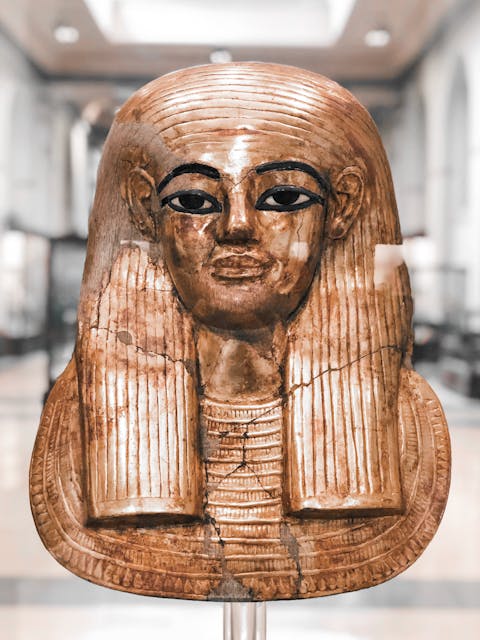Learn About Greco-Roman & Egyptian Antiquities
Since the beginning of modern times, artists, philosophers, politicians alike and more have sought to emulate the glory and accomplishments of the antiquity.
Greek statue of Cronos in Vatican City
World famous renaissance sculptors and painters took inspiration from the legacy left behind by ancient artifacts from Greece, Rome, and Egypt, promulgating an enduring tradition of artistic practice and inspiration of which the effects can still be seen today in contemporary art. Artwork from these respective regions and eras set a precedent for endless generations to come. But what is it about these cultural origins that have been able to reach throughout time and captivate audiences even thousands of years later?
Ancient Egypt
Ancient Egypt unified at around 3100 BCE and lasted until 30 BCE when they were conquered by Rome. Chronologically, the ancient Egyptians were the first to establish a style and practice of art, particularly in sculpture and architecture, that would make up this trifecta of unscalably influential ancient cultures. Ancient Egyptian civilization is often broken up by historians into different subcategories ranging from the Old Kingdom, the Middle Kingdom, and the New Kingdom. Their contributions to modern society are multitudinous, such as their innovations in irrigation, discoveries in mathematics, contributions to foreign relations such as the first known peace treaty ever signed, and success in construction techniques that allowed them to create iconic monuments such as the Great Pyramid. Most everyone in the world would be able to identify great works of Egyptian art such as hieroglyphs, the Great Sphinx, the mask of King Tutankhamun, the Rosetta stone, Nefertiti bust, and more.

Today people across the world are fascinated by the easily recognizable iconography of the region and period, and it is often time that one can find themselves enraptured and mystified by the enigmatic qualities of Egyptian art.
Ancient Greece
Ancient Greece was thought to have been founded in the 8th century BCE, and marked in history by their great contributions to Western culture, most notably in the areas of politics, language, philosophy, theatre, mythology, literature, architecture, and of course art. Despite being a civilization that existed close to three thousand years ago, much of their accomplishments are recognizable by name today. Such examples include the Parthenon on the Acropolis, the Belvedere Torso, and the Discus Thrower. In addition to their feats in architecture and white marble sculpture, the Ancient Greeks are also well known for their innovations in pottery using black and red figure painting, as well as terracotta sculpture. Much of their artwork would later be prized by the Romans, leading to a plethora of replicas and bronze copies that were made in order for such works to be enjoyed and studied by more people.
"Their culture and way of life being characterized by a great sense of nationalism and an importance of warfare..."
Ancient Rome
After the Romans defeat of the Corinths at the Battle of Corinth in 146 BCE, Ancient Rome came to be the dominating civilization in the West. Much of their culture was modeled after that of the Ancient Greeks which certainly assisted in their rise to historical greatness and cultural prowess. Like their Greek predecessors, they contributed enormously to Western culture, being especially known for their innovations in engineering such as in their great aqueducts and roads, some of which still stand today, as well as their monuments, palaces, public facilities, and their Republican system of government. Their culture and way of life being characterized by a great sense of nationalism and an importance of warfare, and much of the surviving artwork from the era reflects these centerpoints of Roman society. Well known contributions to art include the Coliseum, Arch of Titus, Colossus of Constantine, and Trajan’s Column. Additionally, much of Ancient Roman art is marked by expertise in mosaics, pottery, and jewelry.
Legacies that transcend time
The influence of these three cultures and their artwork is so deeply instilled into Western culture that it is easy to not notice how many ways we are affected by their contributions during our everyday lives, and thus it is difficult to truly draw a line between what is wholly modern and what is rooted in antiquity. It is incredible that even thousands of years later people across cultures, ages, and backgrounds are so familiar with these works of art which have consistently remained to be valuable and fascinating throughout the centuries. Ancient Egyptian, Greek, and Roman antiquities are undeniably significant, not only in terms of art and aesthetics, but in the larger picture of anthropology, and the history of the Western world and mankind as we know it.

